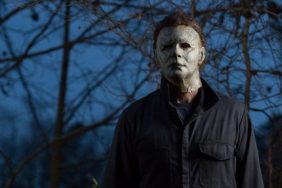
Bursting at the seams with tons of newly released material by the studio this looks to be the perfect coffee table book for Hammer enthusiasts, taking us right from The Quatermass Experiment in 1955 right through to the more recent The Resident.
Hearn was kind enough to sit down and take us through what promises to be a mouthwatering compilation for any horror fan!
You’re the main Hammer consultant with a growing collection of publications. Can you give our readers and those unfamiliar with Hammer a quick summation of each release?
The books started with The Hammer Story, which Alan Barnes and I originally wrote in 1997. That provides a corporate history, and an overview of what we considered to be the essential horror and fantasy films. Hammer Glamour followed in 2009, and was less a book about Hammer than biographies of 50 of the companys most important leading ladies. That one seems to have been the most popular, because I think the photography has a broad appeal. The Art of Hammer came out in 2010 and featured a selection of 300 film posters from the late 1940s to the late 1970s. Theres less text in that one, but scanning and restoring the posters meant it was still labour-intensive. The latest one is The Hammer Vault, which has just been published.
So what’s in The Hammer Vault that Hammer fans can look forward to?
One of my aims for the book was to reproduce at least one item on every page that fans wont have seen before. Once the designer, Peri Godbold, and I became immersed in the archive we realised we had enough material for three books, but we whittled it down to the best of the props, publicity material, correspondence, etc.

The Hammer Vault tells the story of the company from the horror years onwards through items weve uncovered in the archive. Theres plenty to read in there, but its primarily a visual history.
Anything in there for the new generation of horror fan?
This is the first Hammer book to bring the story up to date with the films produced by the current management, who bought the company in 2007. The new films, Wake Wood, The Resident and Let Me In get just as much coverage as the classics, and theres even material on The Woman in Black, which hasnt been released yet.
What does Hammer horror mean to you?
I couldnt have written about this company for as long as I have without loving the films. I can see that they arent all masterpieces, but I can find something to enjoy in almost all of them. Ever since I first became involved with Hammer Ive felt rather proprietary about the old films. Im glad to say the best of them have now been critically rehabilitated, but I still think the company and its legacy is undervalued in England.
How did you find yourself becoming the go-to consultant on Hammer?
It started in 1994 when I worked at Marvel Comics. I was given the job of editing the official Hammer magazine, and that led to The Hammer Story, laserdisc audio commentaries, DVD commentaries and now these books. The company has been through two changes of management since those days and Im grateful that each one has wanted to keep me around.
Hammer has released new titles The Resident and Let Me In to name but two any more in the immediate future?
The Woman in Black is released in February, and stars Daniel Radcliffe. Its directed by James Watkins, who made Eden Lake. The new film is nothing like Eden Lake, but its just as impressive.
Can we expect Hammer to be joining the remake trend? There’s a few titles that may well be exciting remake material…
Im not aware of any plans to revisit Dracula or Frankenstein, but several other properties are being discussed. Without wanting to be cryptic, it could well be that some of the classic material could inspire something new.
Can you recommend three essential Hammer films and why?
My personal favourite is Quatermass 2, which in the US was released as Enemy from Space. The themes of government conspiracy and paranoia were years ahead of their time, and so was the sheer pace of the film. Its still quite disturbing in places. The best of the Gothic horror films is almost certainly The Brides of Dracula. It stars Yvonne Monlaur, who was one of Hammers most beautiful leading ladies, and Peter Cushing as Van Helsing. It was directed by Terence Fisher and the production values are outstanding. My final choice is an overlooked gem called Cash On Demand, a real edge-of-your-seat thriller starring Peter Cushing. Its available in the US as part of the Icons of Suspense collection, and its perfect Christmas viewing.

Oh dear. Well, watching Lust for a Vampire makes me a little sad. The director was Jimmy Sangster. Goodness knows I loved him, but there is one scene where he accidentally wanders into shot.
So what’s next for you?
Im glad to say that Hammer is never far away. Ive just directed some documentaries to accompany the forthcoming Blu-ray releases of archive titles. Were editing the programs at the moment.
Anything in horror out there that has impressed you recently?
The last horror film I saw was a preview of The Woman in Black a few weeks ago. The fans of the classic films will recognise it as a Hammer horror, but more importantly it should appeal to a young audience as well. Anyone who has purchased The Hammer Vault can go Hammerfilms.com to access some exclusive Woman in Black content that tells you more about the film. I thought it was excellent, and Im looking forward to seeing it again.









